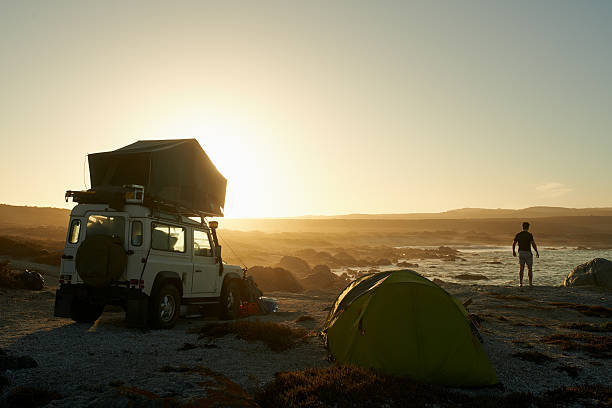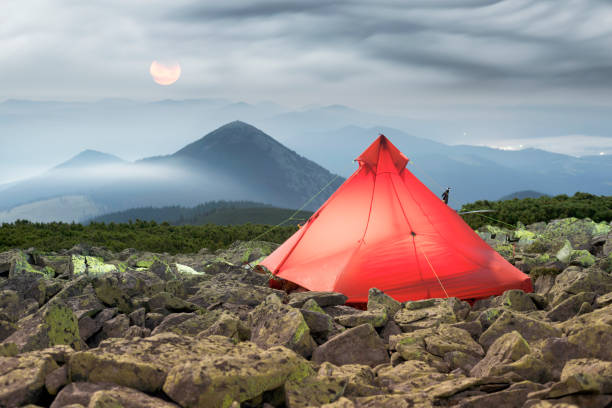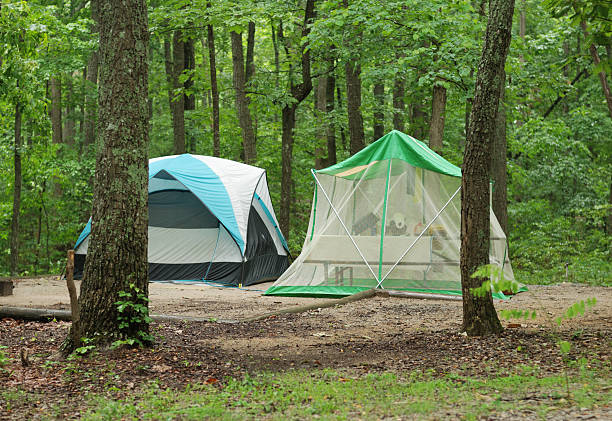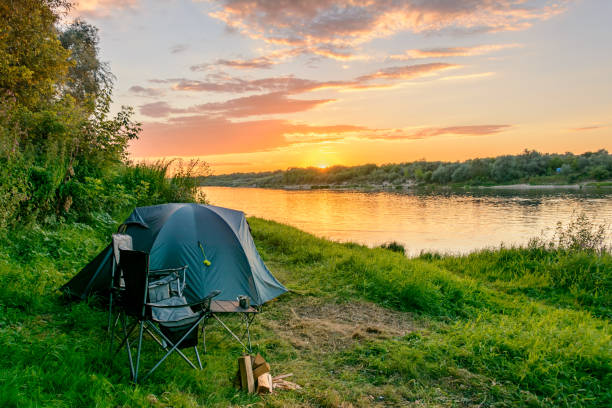All-season camping isn’t just about braving the snow or chasing summer sunsets—it’s about being ready for whatever Mother Nature throws your way. And when it comes to gear, your tent is your frontline defense. After years of crawling into soggy corners, fighting with tent poles in the wind, and waking up either drenched or freezing, we decided to upgrade to tents that could actually handle all four seasons. So, we hit the road—rain, shine, and everything in between—to test out some of the top rooftop tents made for year-round adventures.
Each of these best-rated tents has been through the wringer with us: from windy mountain overlooks to humid swamp-side trails. Some kept us bone dry during midnight downpours, while others made us question why we ever slept on the ground to begin with. Whether you’re building out an overland rig or just looking for a rugged home away from home, these seven all-season best rooftop tents stood out from the rest. Let’s dive in with our #7 pick and work our way to the top performer.
Table of Contents
- SmittyBilt Overland GEN2 Tent
- Sanhima Rooftop Tent
- Thule Tepui Autana Rooftop Tent
- Naturnest Rooftop Tent
- Topoak Rooftop Tent
- Sanhima Rooftop Hard Shell
- Adventurer Pro Rooftop Tent
- Our Verdict!
- How to Choose the Top Rooftop Tents for Overlanding & Car Camping
- Setup Speed & Ease of Use
- Weatherproofing & Durability
- Comfort & Space
- What type of rooftop tent is best?
- Why do overlanders use rooftop tents?
- How do you heat proof a tent?
7
SmittyBilt Overland GEN2 Tent
We first tried the SmittyBilt Overland GEN2 Tent on a desert drive through Utah’s red rock country. Mounted up top, this thing was like a little fortress above ground. Setup took just minutes—seriously, pop it open, and you’re ready to sleep under the stars. What really impressed us was how self-contained everything was. All the bedding stayed inside the tent, which meant we didn’t have to clutter the truck bed with sleeping bags or pads. A huge win for space-saving on long trips.
Now, the install? Let’s just say it’s a bit of a bear the first time. I remember trying to tighten the nuts on the brackets, arms wedged in at weird angles like I was hugging the tent from the inside out. It took a few days—one bracket at a time—but once it was up, it wasn’t coming off. That gave us real peace of mind about security, even when we left it unattended for hikes.
The Smittybilt overlander roof top tent felt solid, secure, and exceptionally well-made. The materials exceeded expectations—thick, durable, and weather-tight. It’s not a featherweight setup, but once installed, it’s a go-anywhere, do-anything kind of shelter. Perfect for folks who want no-fuss rooftop luxury and don’t mind a little sweat equity upfront.
Watch this detailed review of the product by Gear Know-How on YouTube!
Pros:
✅ Extremely rugged build with a heavy-duty 600D shell
✅ Integrated LED strip lighting for night visibility
✅ Telescoping ladder and overhang provide safer, dry access
Cons:
❌ Bulky when packed—can reduce vehicle clearance

6
Sanhima Rooftop Tent
Next up, we hauled the Sanhima Rooftop Tent across the Pacific Northwest—think fog, rain, sunbursts, and a ton of winding roads. Mounted on a custom utility trailer we’d converted for camping, this tent was an absolute gem from the start. At just over 134 pounds, it’s noticeably lighter than many other rooftop tents we’ve used, and the slimline design made highway driving smooth with zero noticeable drag.
Setup? Blink and it’s done. The gas struts do the work—just unlatch, give it a nudge, and it’s fully popped in under 30 seconds. Tear-down is just as painless. During a particularly rainy spell in Oregon, we stayed bone dry thanks to the AquaShield coating and the tightly sealed fabric. Not a drop got in, and it even blocked out sunlight enough to let us sleep in long after sunrise.
Inside, the silver-lined blackout fabric offered both privacy and insulation, while the tri-color LED light strip added ambiance and functionality—especially the amber mode that kept mosquitoes at bay. The high-density mattress made us forget we were in a tent at all. This hard shell roof top tent felt like a rolling bedroom: efficient, cozy, and incredibly well thought out for family or solo campers alike.
You might also want to check out our exclusive roundup of The Best Camping Tents for Families!
Pros:
✅ Ultra-slim 5.43″ profile for garage access and minimal wind drag
✅ Skyview window creates an open, scenic interior vibe
✅ Waterproof and UV-resistant with AquaShield tech
Cons:
❌ Some wind noise reported at highway speeds
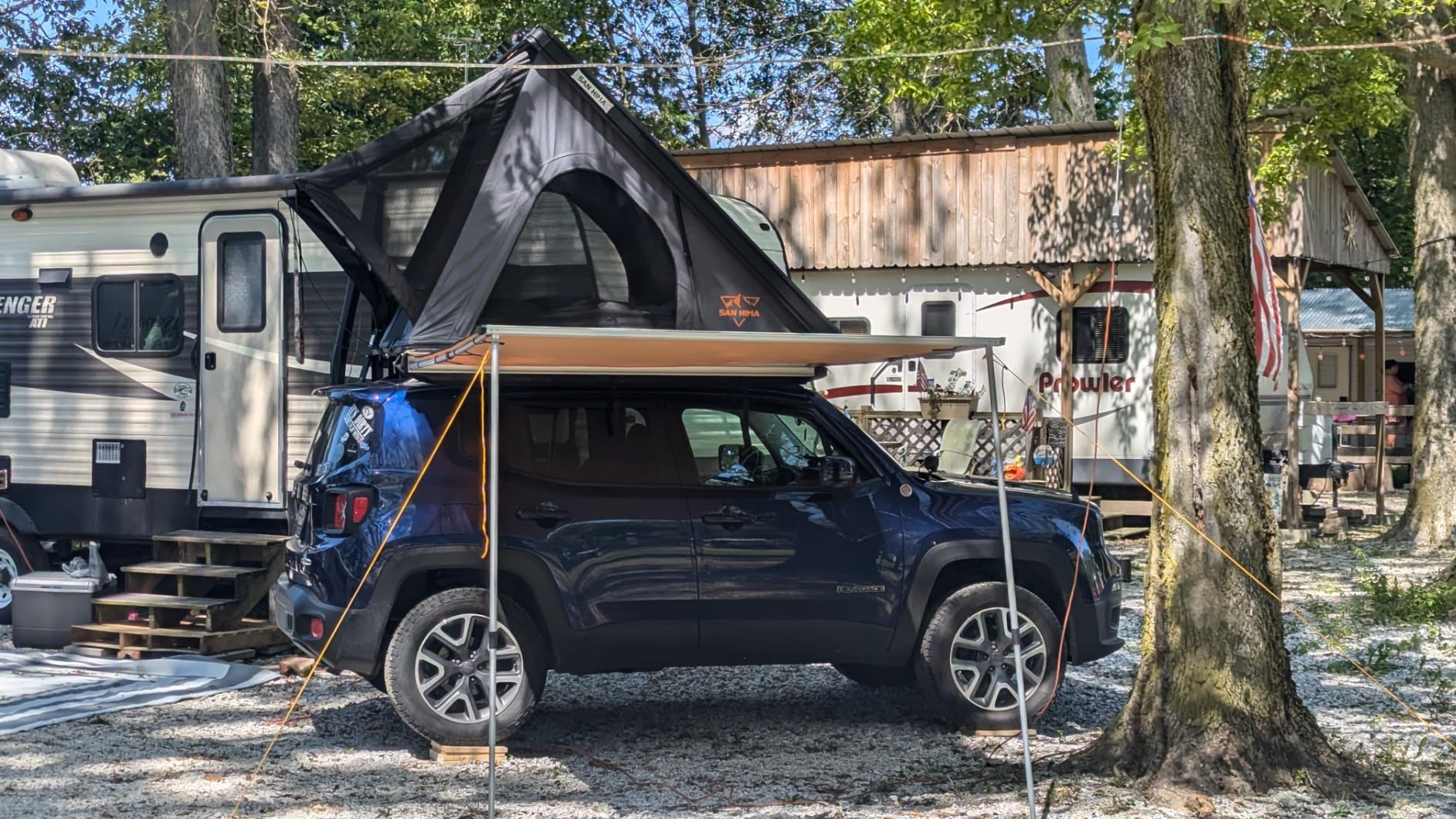
5
Thule Tepui Autana Rooftop Tent
Best Quality. If there was ever a tent that turned heads at the trailhead, it’s the Thule Tepui Autana Rooftop Tent. We mounted this car top tent on our Suburban for a road trip through Colorado’s high country, and it was like having a treehouse on wheels. The extended canopy entrance with the optional annex felt downright luxurious. It created a covered space for changing clothes, stashing gear, or just sipping coffee out of the rain.
Setup was intuitive once mounted (pro tip: bring a buddy—it’s heavy!). Gone were the days of fumbling with tangled guy lines and uneven terrain. Just pull up, unfold, and you’re set. The high-density foam mattress gave us some of the best sleep we’ve had camping, and the ventilation from mesh panels kept the interior fresh—even during warmer days.
We also appreciated the gear pockets inside. With three people (yes, it comfortably sleeps three!), the extra storage made staying organized easy. Best part? Waking up to a clear mountain sunrise from an elevated perch without a single rock in our back. If you’re after all-weather protection with a touch of comfort, the Tepui Autana delivers in spades.
Pros:
✅ High-end build quality with extended canopy for added privacy
✅ Includes annex for extra gear or pet space
✅ Comfortable foam mattress and great airflow
Cons:
❌ Premium price for a two-person capacity
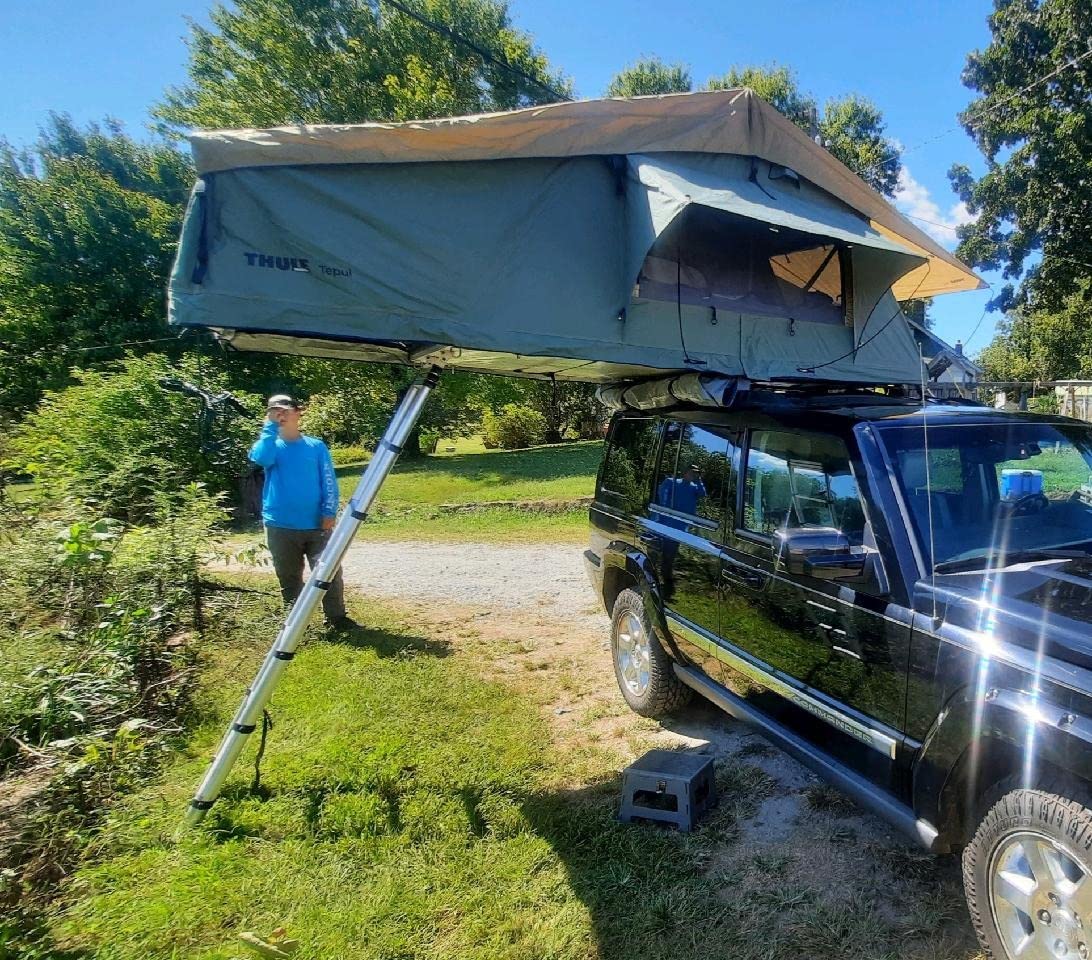
4
Naturnest Rooftop Tent
The Naturnest Rooftop Tent came along with us on a long-haul expedition from Arizona to Big Bend, Texas. This rooftop tent hard shell felt like it was built for endurance. The pop-up design made setting up camp an actual joy—we’d pull over, unlock the latches, and within 30 seconds we were home for the night. No stakes. No wrestling poles. Just ease.
The aircraft-grade aluminum shell felt indestructible, even on rough backroads. One night, wind gusts hit 40 mph, and the tent barely flinched. It stayed snug and secure, giving us a cozy, safe space when lesser gear would’ve been flapping like sails. Inside, the 5 cm memory foam mattress was a game-changer after long hikes, and the blackout fabric created a perfect sleep zone no matter the hour.
We especially liked the partitioned storage bags—ten of them! Plus, external waterproof shoelaces (no muddy boots inside) and a spot to stash the ladder when traveling. It even had crossbars up top for mounting extra gear. The LED light strip with USB was the cherry on top. One downside? You’ve got to pack up the whole setup if you want to drive somewhere—but we’re already sketching plans for a trailer mount to fix that.
Also, feel free to browse the Best Extreme Weather Tent for Camping!
Pros:
✅ Excellent insulation with aluminum honeycomb shell
✅ Quiet, soft-close latches and easy hydraulic lift
✅ Custom LED lights and shoe storage add thoughtful touches
Cons:
❌ Premium price for a two-person capacity
3
Topoak Rooftop Tent
Easiest Setup. I didn’t realize how much I’d fall in love with this tent until I spent a night in the Topoak Rooftop Tent, staring up at the stars through the panoramic skylight. I’d originally picked it because it had a solid feature list—420D Oxford fabric, vinyl coating, 10,000mm waterproof rating, UV protection, and a hard shell—but I underestimated just how polished and capable it would feel in real use.
Set-up was ridiculously fast. It literally popped open in three seconds thanks to those air pressure support poles, and folding it down took barely 10. No wrestling with stubborn zippers or tangled straps. This thing is made for campers who want to get straight to the good part.
Inside? Pure comfort. The triple-layer high-density foam mattress was way more plush than I expected. I’m a side sleeper and usually wake up sore when I camp, but not this time. There’s even a moisture barrier and drainage holes to help with airflow and condensation. Pro tip: we added a set of interlocking foam tiles underneath for extra squish, and it made a great night even better.
The U-shaped bar expands the tent’s interior by 35%, which might sound like a gimmick, but it made a real difference. My partner, our kid, and I all fit comfortably, and we had enough headroom to sit up and move around without feeling boxed in.
What really blew me away, though, was the build quality. We’re notoriously rough on our gear—busted zippers, snapped buckles, you name it—but after months of use across everything from sandy beaches to mountain passes, the Topoak hardtop rooftop tent has held up like a champ. Still waterproof, still zipping like new.
Cruise through the official website of this brand to explore many more choices.
Pros:
✅ Pop-up design opens in 3 seconds—super fast setup
✅ Spacious interior with panoramic skylight views
✅ Holds up well to heavy use and bad weather
Cons:
❌ Too small for more than two adults and a child
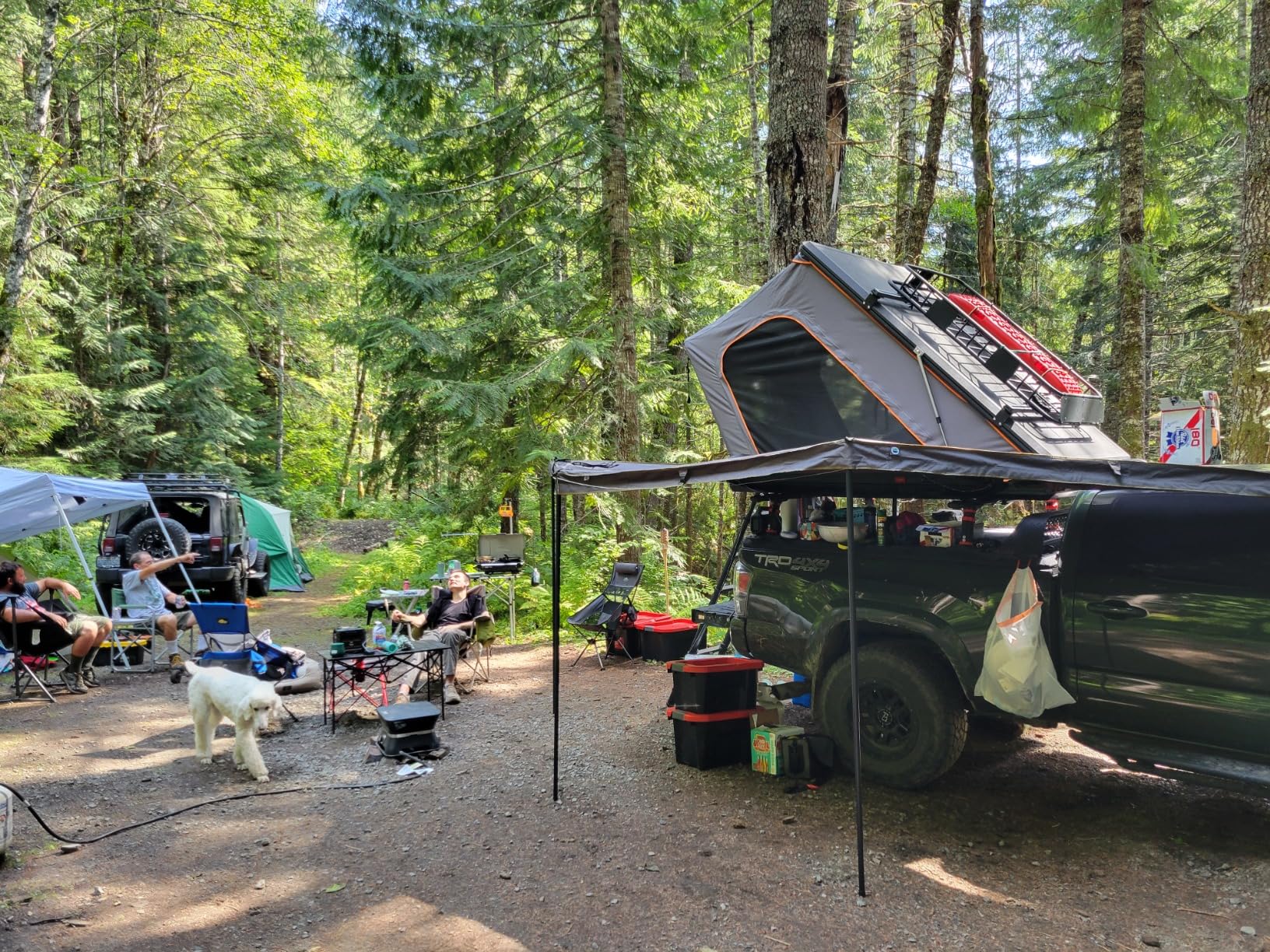
2
Sanhima Rooftop Hard Shell
Mounting the Sanhima Rooftop Hard Shell to our 2020 Jeep Wrangler felt like unlocking a whole new level of freedom. I was initially drawn to its ultra-slim profile and lightweight build—at just over 160 lbs, it’s 8% lighter than its predecessor and sleek enough to slip under garage doors and fly under the wind radar on the highway.
I was skeptical about how it would handle high speeds and off-road jostling. But after cruising at 75 MPH on Arizona highways and crawling up rocky trails near the Grand Canyon, I was sold. This tent holds on tight. No rattling, no wobble—just pure confidence.
The first test came during a surprise two-night storm of rain and snow at the South Rim. The AquaShield tech lived up to the hype. Zero leaks, zero warping. It stayed bone dry inside, even with the outside temps dipping to 20 degrees. We ran a small propane heater inside (carefully, of course), and while condensation built up slightly, the airflow from the mesh windows kept things comfortable.
Inside, this thing is roomy. My wife and I had space for two sleeping bags, pillows, and a few extra blankets—and still felt like we had room to move around. The memory foam mattress was a dream, especially after long hikes. I appreciated the thoughtful extras too: shoe bag, interior pockets, even a tri-color LED strip that we used for both mood lighting and mosquito defense!
See the official brand website to browse many different options.
Pros:
✅ Lightweight but tough—ideal for Jeeps and smaller rigs
✅ Memory foam mattress and large interior = top-tier comfort
✅ Waterproof, UV-protected, and holds up in extreme cold
Cons:
❌ Condensation build-up in colder weather
1
Adventurer Pro Rooftop Tent
Best Overall. I’ll be honest—at first, I wasn’t entirely sold on the Adventurer Pro Rooftop Tent. I had been eyeing another budget RTT online and was just about to pull the trigger when this one popped up. It had all the bells and whistles I didn’t know I wanted: a hard aluminum shell, triple-layered mattress, and even a built-in USB port (just plug in your external power, and you’re golden). I figured, why not?
Shipping was surprisingly fast, and the wooden crate it arrived in looked like it could survive a tumble off a cliff. No damage, no missing parts—just ready to go. Setup was laughably easy. The gas struts practically did the work for me—pop the latches, and it’s open in five seconds flat. That first night, I felt like I had unlocked a whole new level of camping.
Inside, the mattress was shockingly thick and comfy, and I didn’t even need the extra pads I brought along “just in case.” The YKK zippers were rugged and satisfying to use—no snagging or sticking here. What really impressed me, though, was how spacious it felt. I camped with my partner and our 8-year-old, and we had plenty of room to stretch out without feeling cramped.
Bonus points for the included side awning, which slid right into the tent’s bottom rail. It’s not going to hold up to hurricane-force winds, but it gave us a perfect little shaded nook to hang out in during a sunny afternoon at the Outer Banks. Even my wife—who swore she’d never sleep in a ground tent again—was grinning from ear to ear.
Bottom line? This hard top roof top tent gave us everything we needed and then some. It’s solid, comfortable, super easy to use, and priced way below other tents with similar features. If you’re after a no-fuss RTT that doesn’t cut corners, this one hits the sweet spot.
Pros:
✅ Budget-friendly without cutting on core features
✅ Triple-layer mattress and USB outlets inside
✅ Pops open in 5 seconds—easy even for solo campers
Cons:
❌ Awning included is flimsy in strong winds
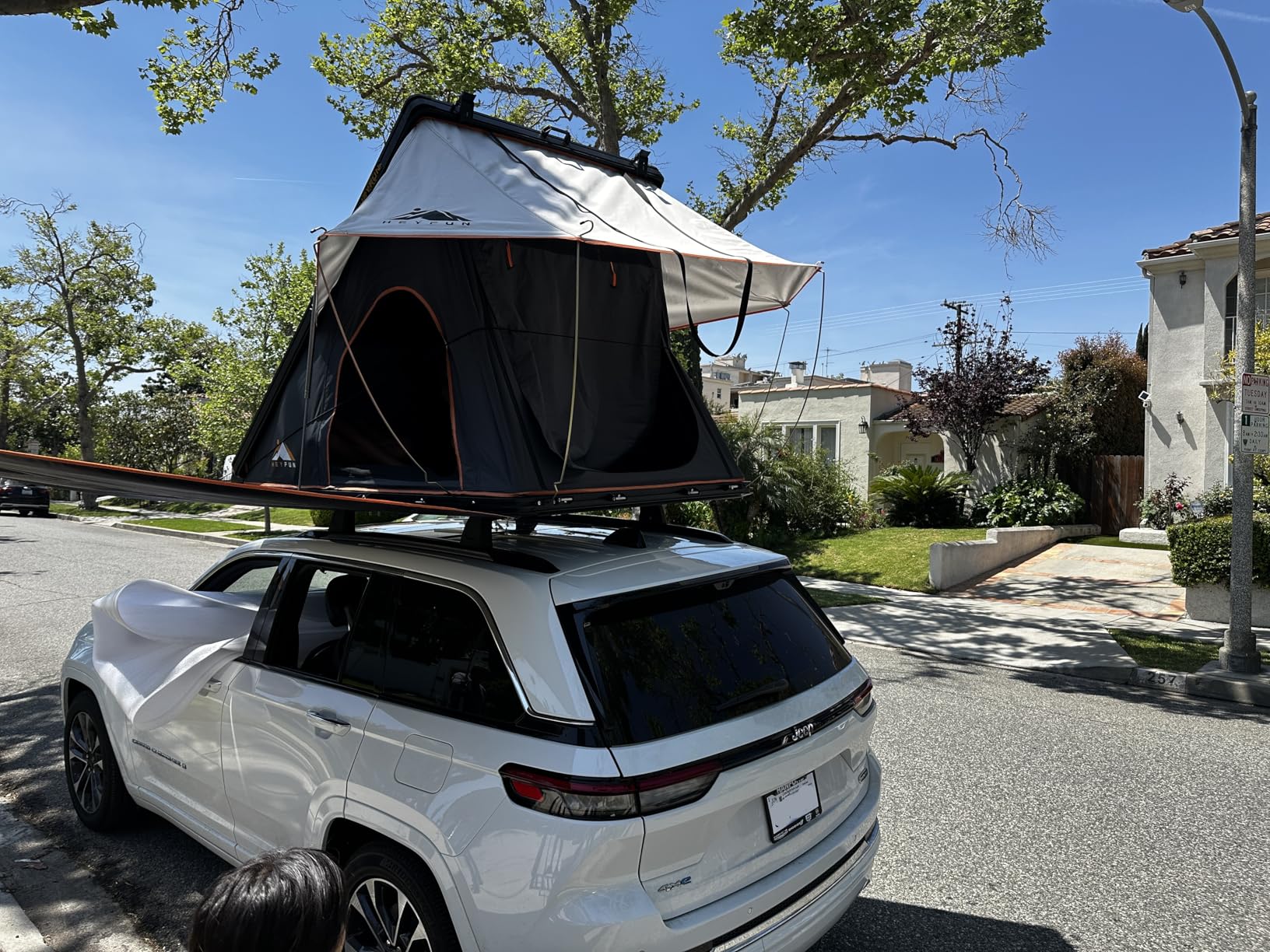
Our Verdict!
From the above roundup of the top rooftop tents for overlanding, we chose the Adventurer Pro Rooftop Tent as our Best Overall option given its remarkable performance, value for money and high-level functionality. Having said that, there were other options that stood out for us based on some specific feature. Check them out below.
- Easiest Setup: Topoak Rooftop Tent
- Best Quality: Thule Tepui Autana Rooftop Tent
How to Choose the Top Rooftop Tents for Overlanding & Car Camping
Choosing the best rooftop tents for overlanding or car camping isn’t just about picking the flashiest gear—it’s about finding the right fit for your rig, your travel style, and the terrain you’re heading into. Here are three key features you should always consider, with some real talk to go with them:
🛠️ 1. Setup Speed & Ease of Use
When you roll into camp after a long day on the trail, the last thing you want is to wrestle with poles and zippers in fading light. That’s where quick-deploy systems shine. Look for rooftop tents with gas struts or hydraulic lifts—these bad boys can pop open in seconds and save your back (and patience).
Pro tip: A tent that opens and closes in under a minute is worth its weight in campfire coffee.
☔ 2. Weatherproofing & Durability
Your RTT needs to handle rain, wind, sun, and possibly even snow. Go for tents made with 420D or higher Oxford fabric, poly-cotton ripstop, or materials with 5,000mm+ waterproof ratings. Don’t forget about a hard shell or aluminum honeycomb base for better insulation and structural strength.
The best rooftop tents don’t just survive the elements—they make you forget the storm is even happening.
💤 3. Comfort & Space
Just because you’re sleeping on your roof doesn’t mean you have to rough it. Top rooftop tents include a high-density or memory foam mattress, mesh windows for airflow, and a spacious interior that fits at least two adults comfortably. Bonus if it includes a skylight—because stargazing from bed is an underrated luxury.
Remember, great sleep equals great adventure. Don’t skimp on comfort if you plan to camp often.
What type of rooftop tent is best?
The best type of rooftop tent really depends on your camping style, but hardshell tents are generally the top choice for most overlanders and frequent campers. They offer faster setup, better weather resistance, and often come with more durable construction and features like built-in mattresses or roof racks. However, if you’re on a budget or need more internal space, a softshell tent can be a solid pick—it’s lighter, roomier, and often more affordable. Bottom line: go hardshell for convenience and durability, softshell for space and savings.
Why do overlanders use rooftop tents?
Overlanders use rooftop tents because they offer quick setup, better protection from ground moisture, wildlife, and uneven terrain, and a more secure, elevated sleeping space while traveling off the grid. Unlike traditional tents, rooftop tents keep you off rocky or muddy ground and let you camp just about anywhere your vehicle can go—making them ideal for remote, overland adventures.
What is the best material for a rooftop tent?
The best material for a rooftop tent combines 420D–600D Oxford polyester or poly-cotton ripstop fabric for the body and aluminum or ABS plastic for the shell. Oxford and ripstop fabrics are tough, waterproof (often rated 3,000mm–10,000mm), UV-resistant, and breathable, making them ideal for year-round use. For hard shells, aluminum honeycomb panels offer the best durability, insulation, and structural strength, while ABS is lighter and more affordable but slightly less rugged. A good rooftop tent balances strength, weatherproofing, and weight for maximum overland performance.
